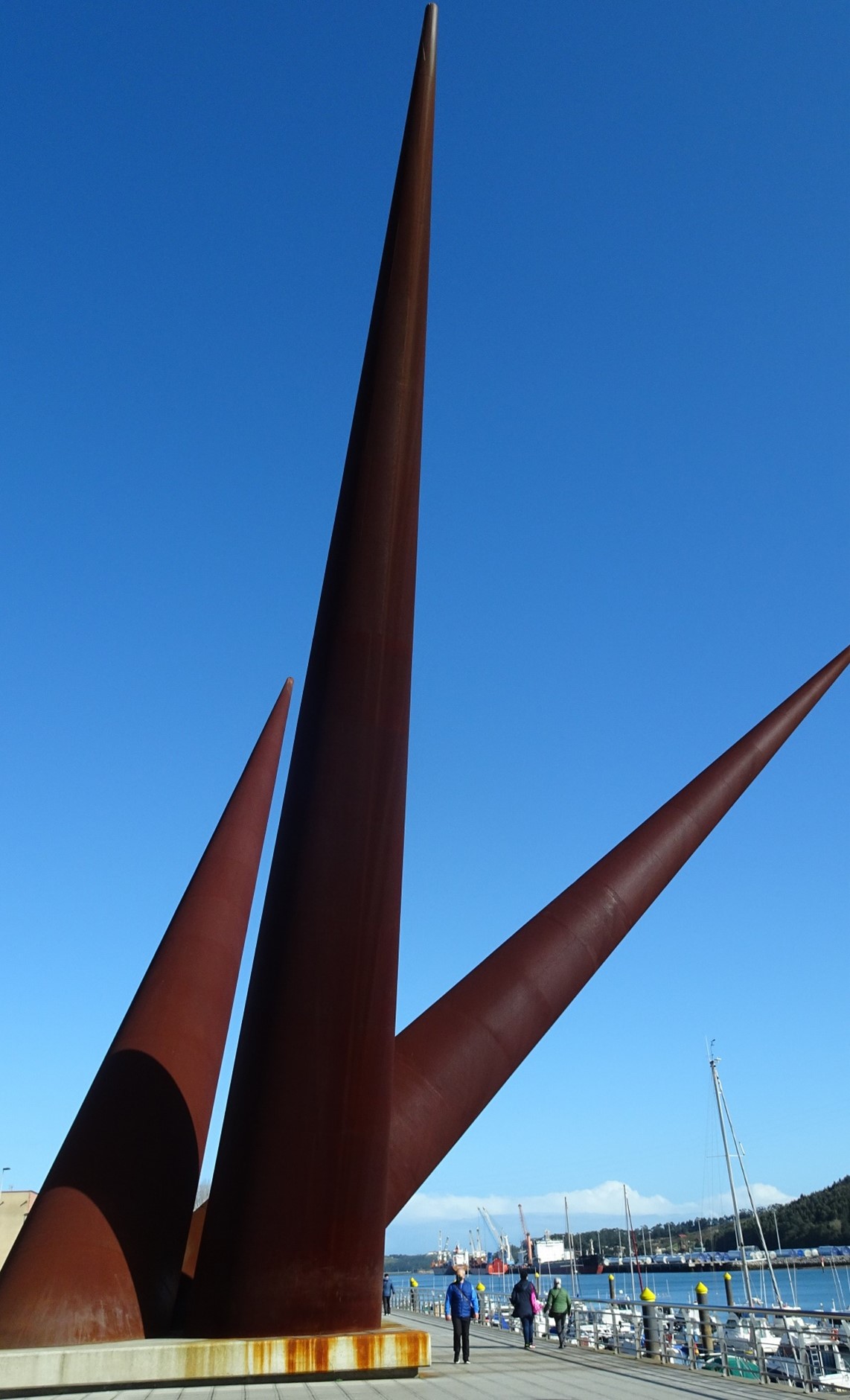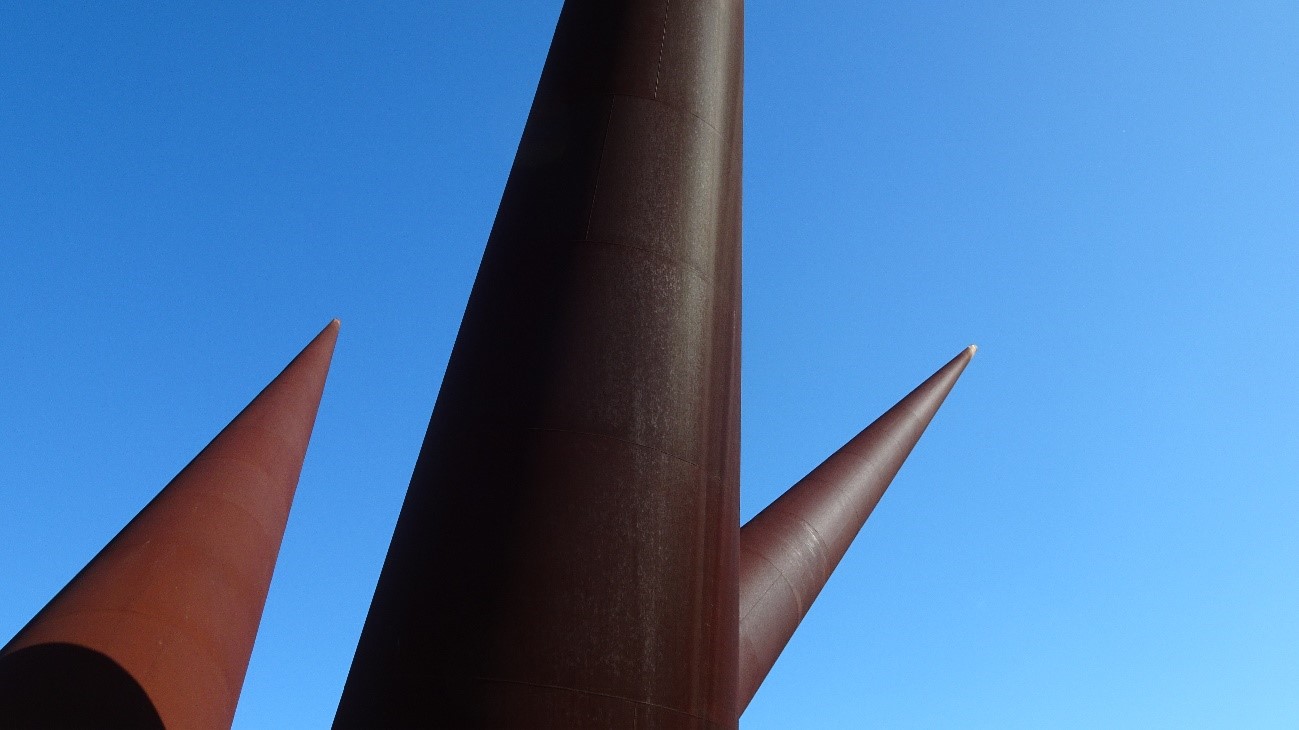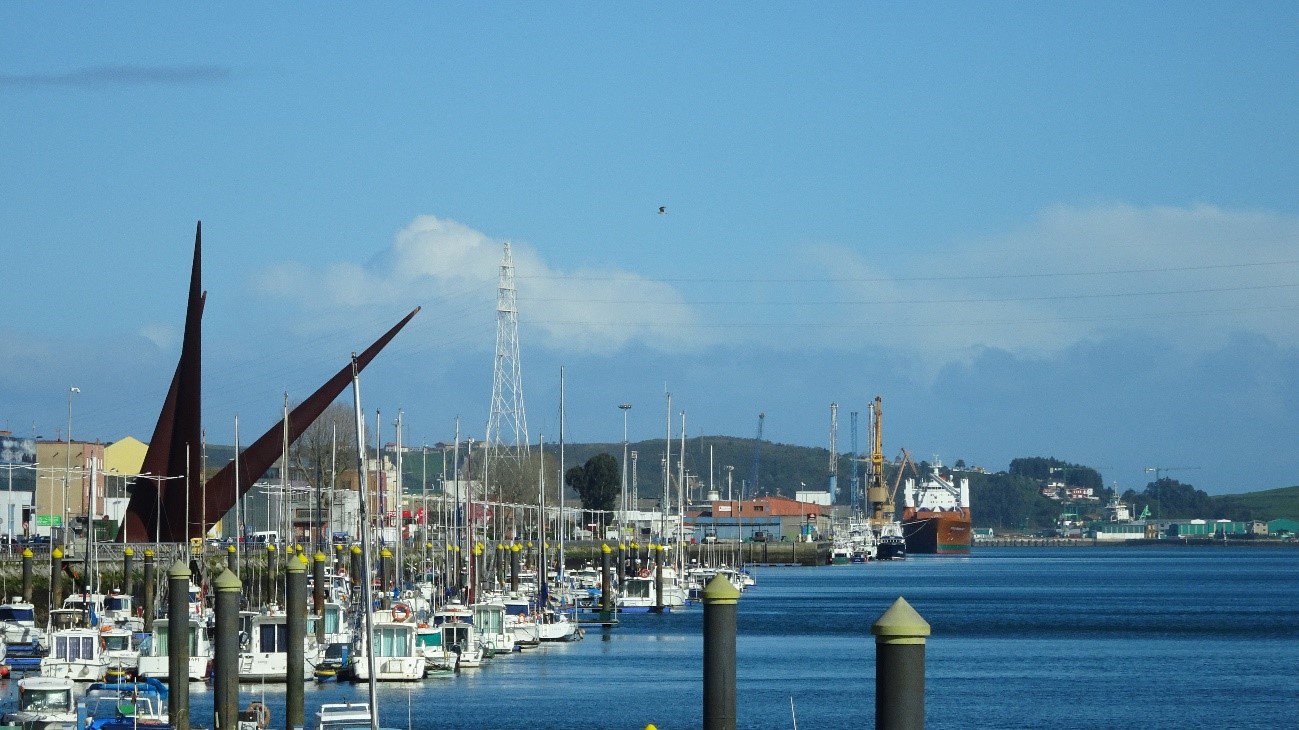Aa-
- Nombre de la obra: Avilés
- Localización de la obra: Paseo marítimo de la Avenida Conde de Guadalhorce, Avilés. Asturias
- Fecha de realización de la obra: 2004 (diseño) 2005 (inauguración)
- Autor: Benjamín Menéndez (colaboradores: Matías Menéndez Artime, Beatriz Corredoira y Eduardo Guerra)
- Investigador: Marina Castro Cabero
- Búsqueda en el mapa: Patrimonio escultórico




Fotografía: Marina Castro Cabero
Obra recogida en: Castro Cabero, Marina. Benjamín Menéndez: un artista vital. Avilés: CEAG, 2022.
La obra Avilés del artista Benjamín Menéndez (Avilés, 1963) se encuentra ubicada en el Paseo de la Ría de la Avenida Conde de Guadalhorce. Se trata de una de las obras de mayores dimensiones de Asturias y se ha convertido en uno de los iconos de la ciudad de Avilés porque consigue aunar y relatar a los visitantes y ciudadanos la historia de la villa.
La pieza se compone de tres conos de acero corten de unos 30 metros de altura que descansan sobre una base de hormigón que realza la pieza, superponiéndola por encima del paseo para dignificarla y que cree un nuevo espacio que no invade al de los peatones, sino que convive y consigue producir una sensación de lugar de convivencia y reposo. Los conos poseen una inclinación diferente, al igual que su orientación, apuntan a los elementos que constituyeron la villa: el mar, el casco histórico y la industria. Su monumental tamaño impacta, pero no da la sensación de usurpación de nuestro entorno, sino todo lo contrario, la escultura genera un nuevo paisaje, una nueva imagen que ayuda a dotar a este espacio antes sin identidad y sin vida.
Otro de los puntos clave para comprender la importancia de esta obra es el medio que se ha empleado para expresarse. El material en sí habla de la propia ciudad y de la industria – metalúrgica tan importante para la ciudad de Avilés. La obra debido a sus grandes dimensiones se confecciona en las instalaciones de la antigua ENSIDESA, por trabajadores de la fábrica, de este modo, la pieza ya estaba intercalada en la sociedad porque había sido realizada por sus propios “paisanos” involucrando en ella a toda la ciudadanía como parte de su ser.
Benjamín vuelve a utilizar un lenguaje minimalista de formas geométricas puras y rectas, de esta manera, la obra se alza en el espacio y consigue una unión de tierra y cielo, pero también participa del medio en el que ha sido instalada, haciendo rivalidad a las grúas y altos hornos que se sitúan en la otra ladera de la ría.
La forma del cono es empleada por el artista avilesino de diferentes maneras atendiendo siempre al discurso en el que se va a enmarcar la obra. Esta forma suele aparecer en su plástica ligada a un discurso de defensa del patrimonio industrial, ya que a través de estos conos recrea los paisajes de chimeneas tan presentes durante su infancia y primera juventud. En el caso de la obra del año 2005 los conos se adueñan del entorno para no perder la memoria del lugar, pero a la vez las formas rectas y perfectas crean un diálogo con el futuro, con la nueva ciudad y los nuevos ciudadanos.
Avilés logra reunir todos los puntos de una buena escultura pública, además, consigue los objetivos que se habían fijado a la hora de su realización que era crear una nueva imagen de la villa. Una imagen que bebe de su contexto y de la historia social e industrial de la ciudad y la resume en estos tres conos de acero corten que se alzan sobre la ría, transmitiendo valores de pertenencia al lugar y de identidad para los ciudadanos que había sido desposeídos de su historia.
Menéndez, Benjamín. Avilés. Imprastur, 2005.
Castro Cabero, Marina. Benjamín Menéndez: un artista vital. Avilés: CEAG, 2022.
